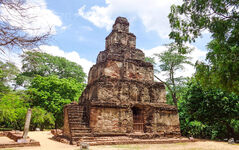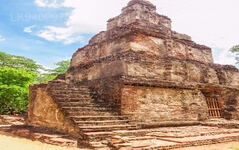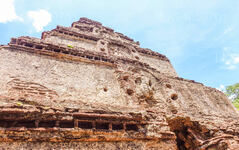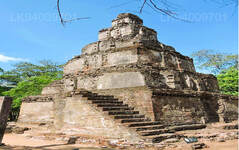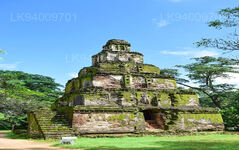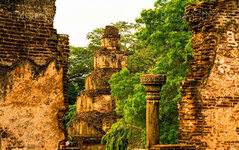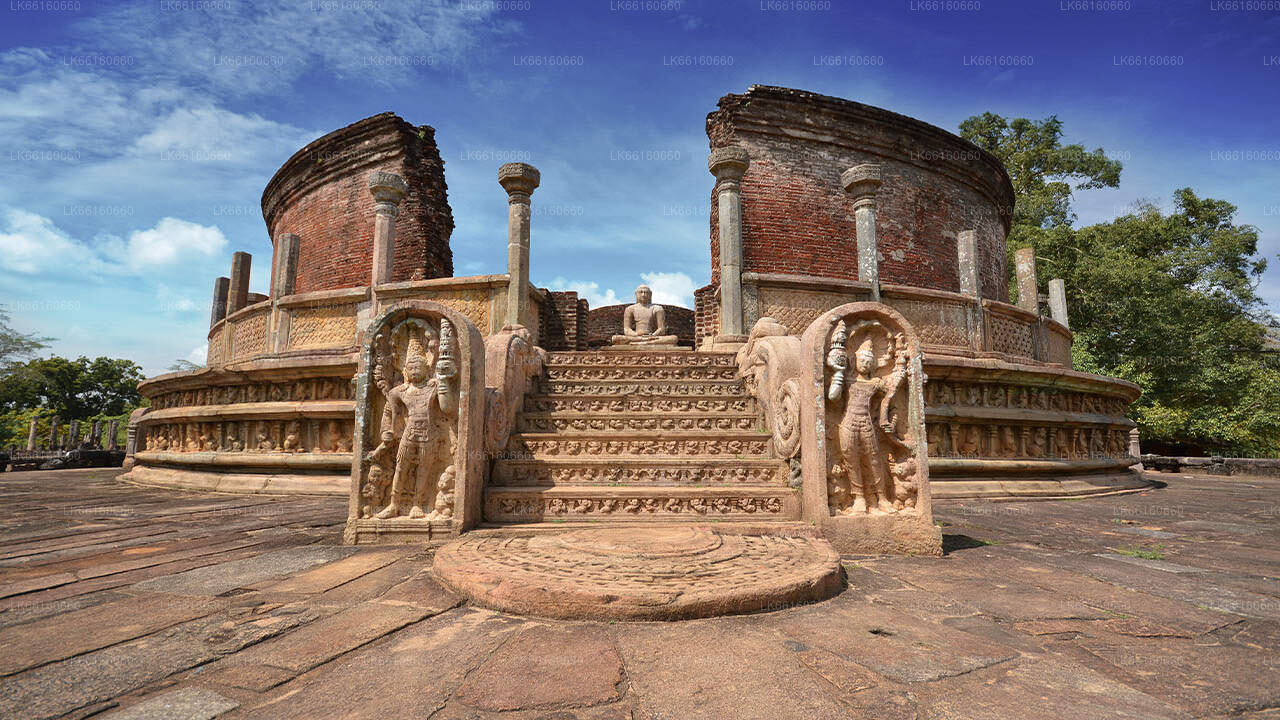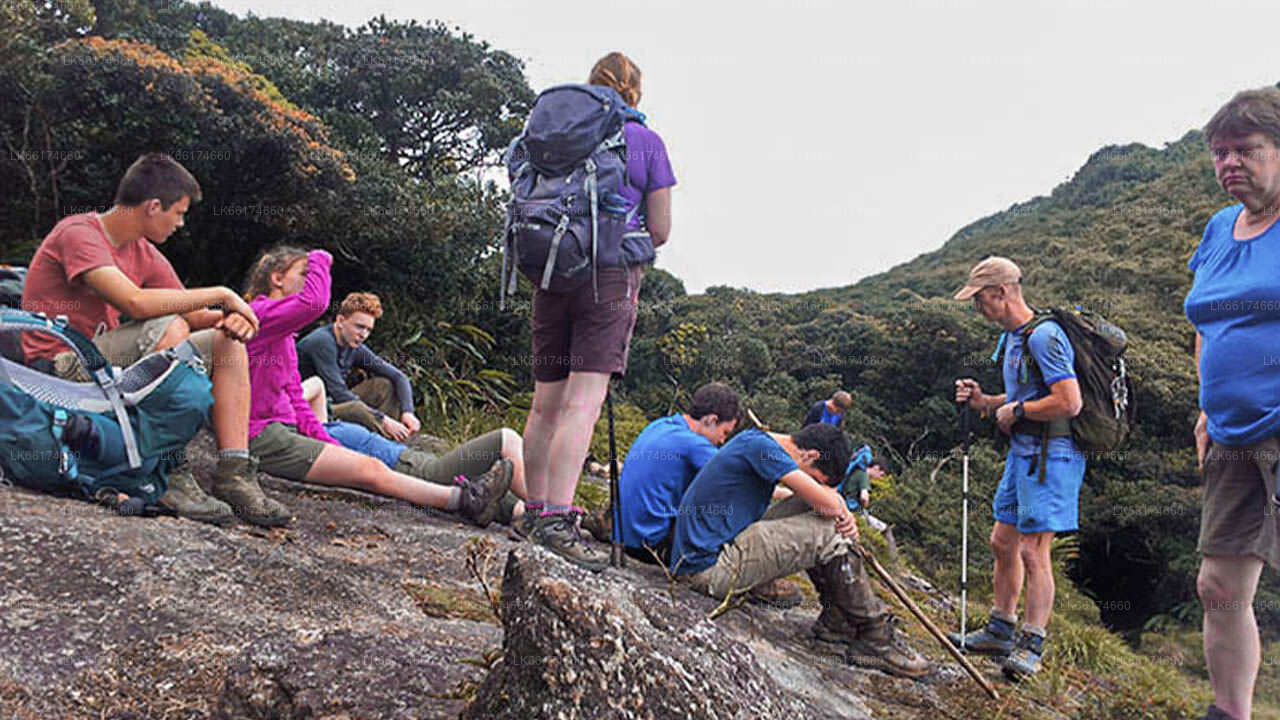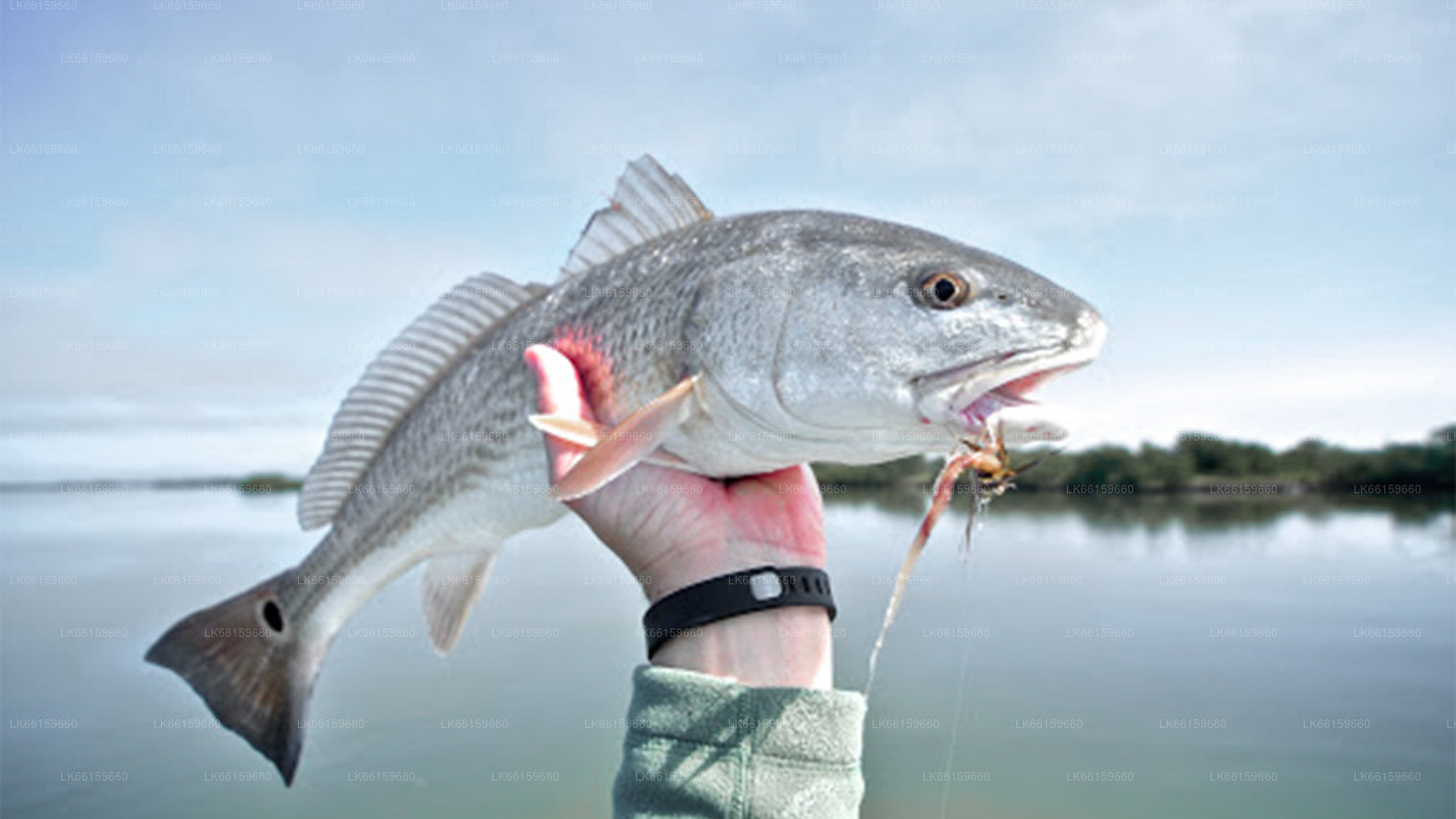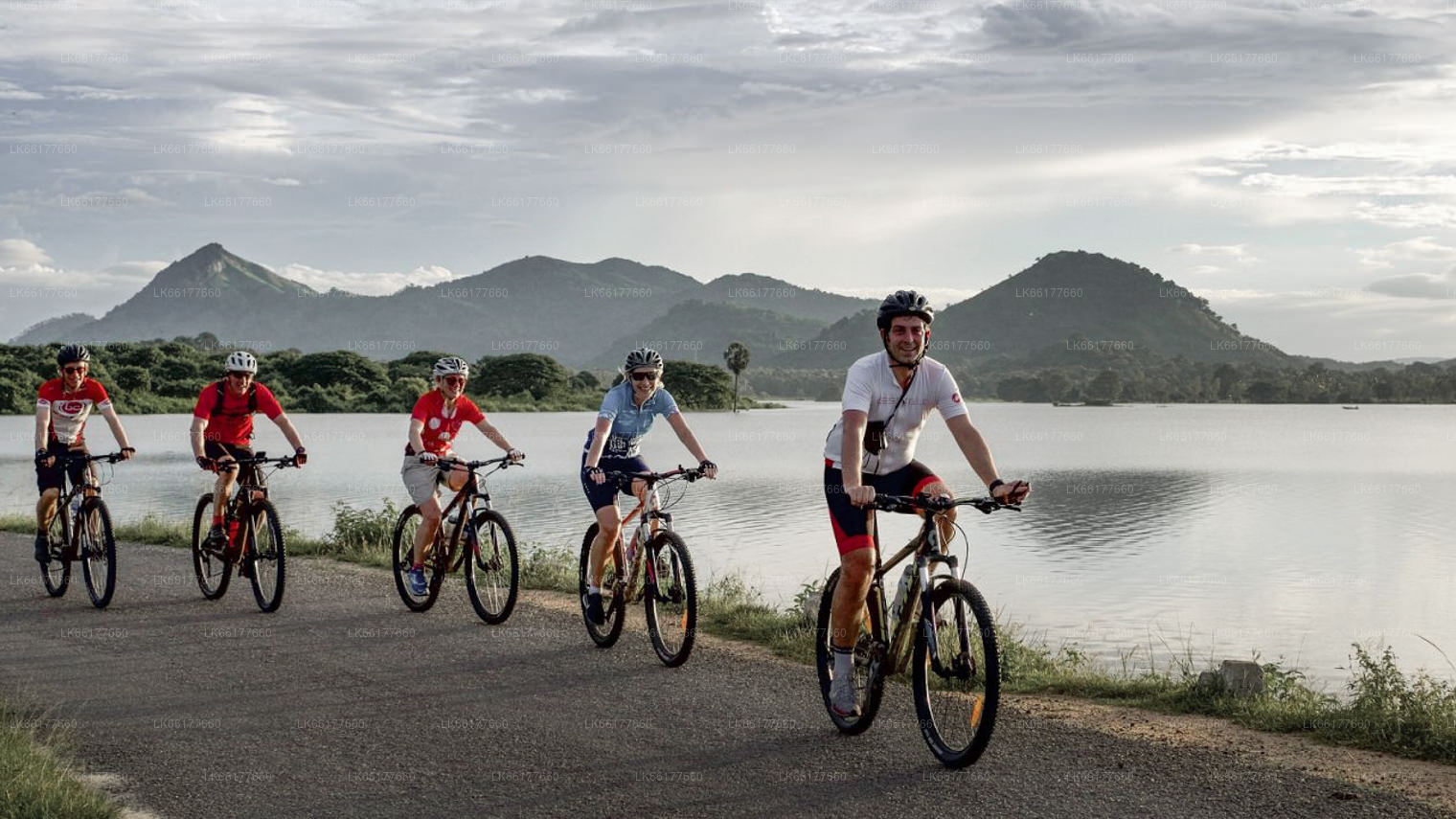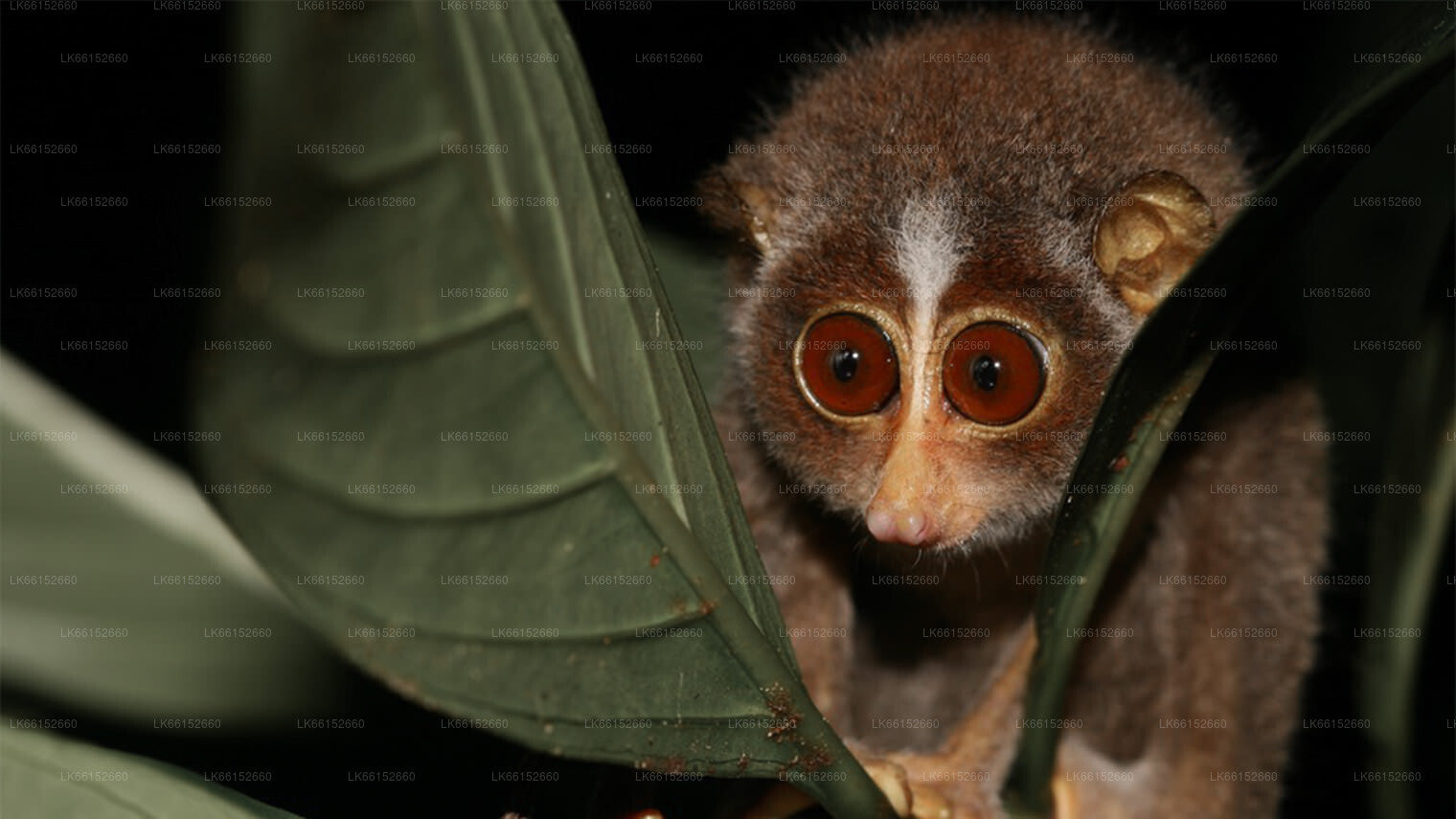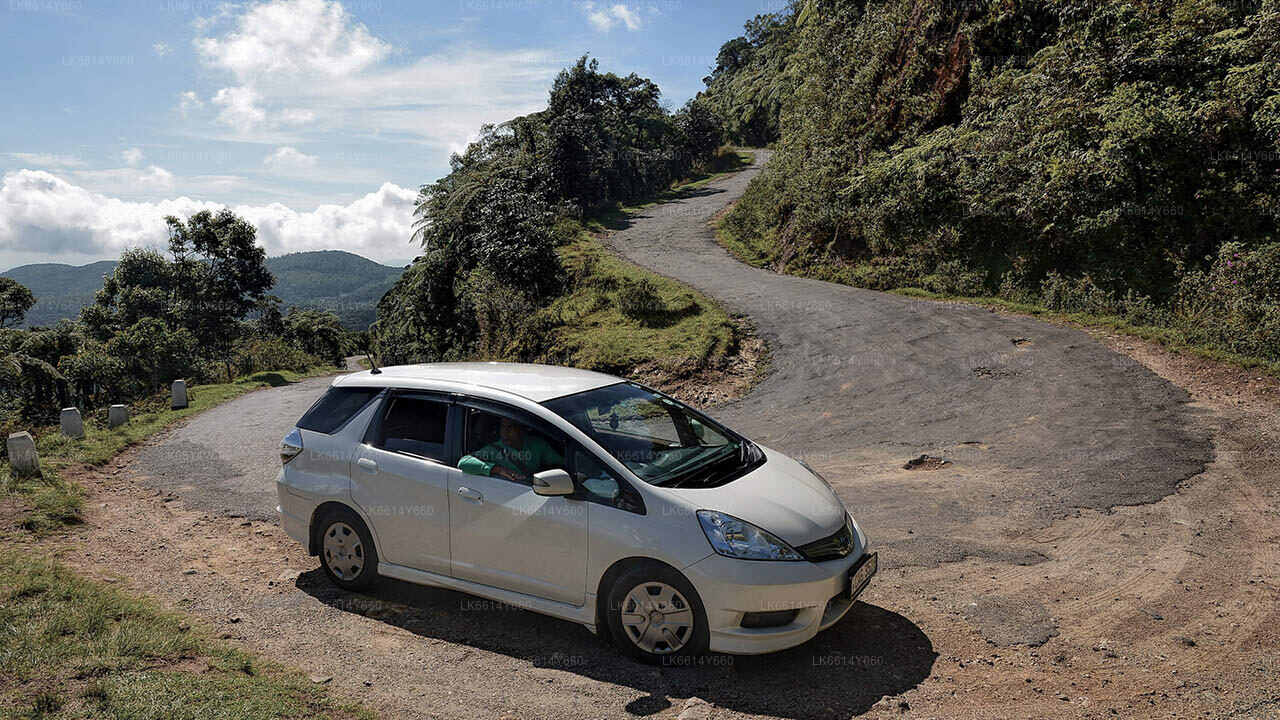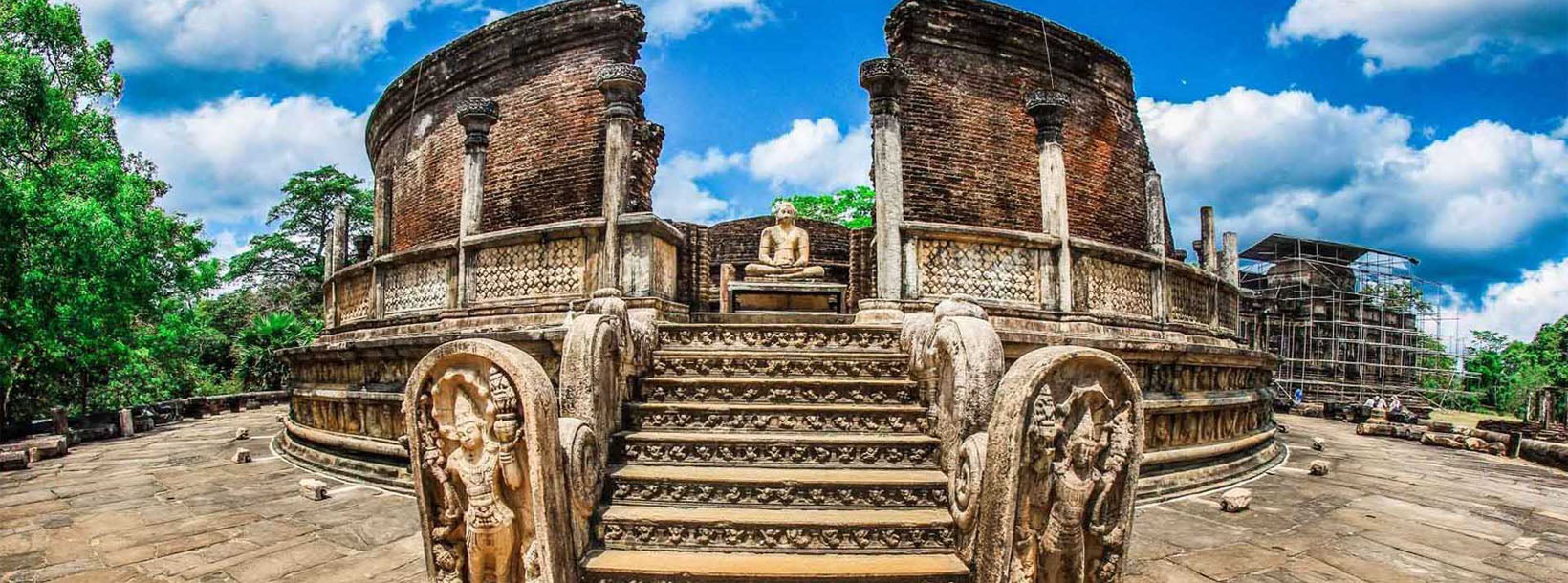
Città di Polonnaruwa
Polonnaruwa, patrimonio mondiale dell'UNESCO in Sri Lanka, fu la capitale medievale del paese (XI-XIII secolo). Rinomata per le sue rovine ben conservate, tra cui le iconiche statue del Gal Vihara, vanta un'architettura imponente, che riflette la grandiosità dell'antica civiltà singalese.
Sathmahal Prasada
Sathmahal Prasada in Sri Lanka: The Stepped Pyramid of Polonnaruwa
Sathmahal Prasada in Sri Lanka is a seven storied stepped pyramid located in an elevated area amongst the ancient city Polonnaruwa. The structure has entrances on all four sides and an additional staircase to reach the upper levels. It is believed to be built during the Polonnaruwa era, somewhere between the 11th and 13th century AD. However, no record exists of this pyramid, its builder or purpose.
The Seven Storied Palace is believed to be a stupa by some, due to its proximity to notable Buddhist ruins such as stupas, monasteries and etc. However the architecture is completely different and does not resemble any other ancient architecture in Sri Lanka. It is the only stepped pyramid in Sri Lanka and one of only four other ancient buildings with square bases, the others all being damaged stupas or monastic ruins in Anuradhapura. It is interesting to note that none of the other three buildings show signs of having been pyramids and all seem to have been squat in structure.
Sathmahal Prasada in Sri Lanka: Resemblance to Architectures beyond the Seas
Though it does not have comparative architecture in Sri Lanka itself, Sathmahal Prasada has similarities to the architecture of some cultures beyond the oceans.
• Stepped Pyramids are structures that use flat platforms or ‘steps’ in a receding order from ground up, to form a shape similar to a geometric pyramid. They are usually large and are built using several layers of stone.
• There are stepped pyramids found throughout history in many cultures and locations around the world.
• Interestingly enough, there were no firmly established connections between the different cultures.
• Sathmahal Prasada is most similar in structure (except for the staircase) to the Koh Ker temple and Baksei Chamkrong temple in Siem Reap, Cambodia (both are Shiva temples built around the 10th century AD), and on a smaller scale similar to the Mayan Temple of the Masks in Tikal, Gautemala and some other Mayan temples.
Informazioni sul distretto di Polonnaruwa
Polonnaruwa è la seconda città più grande della provincia centro-settentrionale dello Sri Lanka. L'antica città di Polonnaruwa è stata dichiarata Patrimonio dell'Umanità dall'UNESCO. Polonnaruwa ha una grande storia di conquiste e lotte alle spalle e costituisce a pieno titolo il terzo elemento del Triangolo Culturale. Situata a circa 140 km a nord-est di Kandy, Polonnaruwa offre ore di piacere infinito per gli amanti della storia e della cultura, grazie ai suoi numerosi luoghi di interesse.
Gran parte delle rovine fisiche che si possono ammirare oggi sono attribuite al re Parakrama Bahu I, che spese molte risorse reali nella pianificazione urbana, inclusi parchi, edifici, sistemi di irrigazione e così via. Il periodo del suo regno è considerato un'età dell'oro, in cui il regno prosperò e prosperò sotto la guida di un sovrano visionario. Il Parakrama Samudra è un gigantesco carro armato e prende il nome dal suo patrono. Il famoso Palazzo Reale del re, la Sala delle Udienze circondata da elefanti di pietra splendidamente scolpiti e la Piscina per il Bagno riflettono le superiori capacità ingegneristiche dell'epoca
Informazioni sulla provincia centro-settentrionale
La Provincia Centro-Settentrionale, la più grande del Paese, copre il 16% della superficie totale del Paese. È composta da due distretti, Polonnaruwa e Anuradhapure. Anuradhapura è il distretto più grande dello Sri Lanka. La sua superficie è di 7.128 km².
La Provincia Centro-Settentrionale offre numerose opportunità per gli investitori che desiderano avviare un'attività imprenditoriale, in particolare nei settori dell'agricoltura, dell'industria agroalimentare e dell'allevamento. Oltre il 65% della popolazione della Provincia Centro-Settentrionale dipende dall'agricoltura di base e dall'industria agroalimentare. La Provincia Centro-Settentrionale è anche chiamata "Wew Bendi Rajje" perché nella provincia si trovano oltre 3.000 cisterne di medie e grandi dimensioni. Sri Maha Bodiya, Ruwanweli Seya, Thuparama Dageba, il Monastero di Abayagiri, Polonnaruwa Rankot Wehera e Lankathilake sono tra i più temuti.

